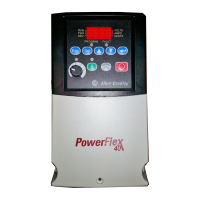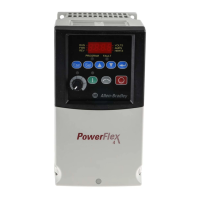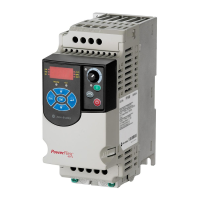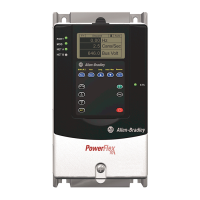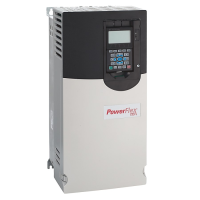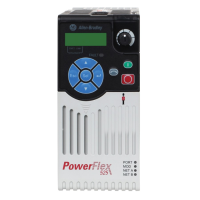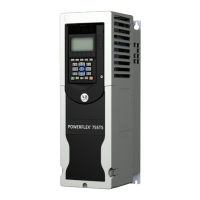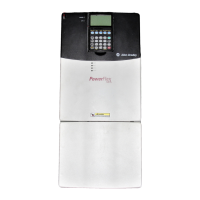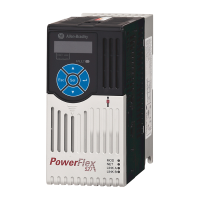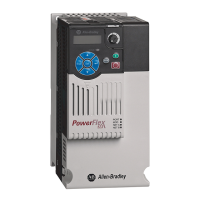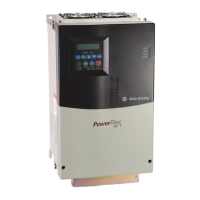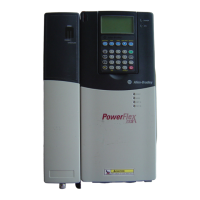3-28 Programming and Parameters
Communications Group (continued)
C104 [Comm Node Addr] Related Parameter(s): d303
Sets the drive node address for the RS485 (DSI) port if using a network connection.
Important: Power to drive must be cycled before any changes will affect drive operation.
Values Default: 100
Min/Max: 1/247
Display: 1
C105 [Comm Loss Action] Related Parameter(s): d303, P037, C106
Selects the drive’s response to a loss of the communication connection or excessive communication
errors.
Options 0 “Fault” (Default) Drive will fault on an F81 Comm Loss and coast to stop.
1 “Coast Stop” Stops drive via coast to stop.
2 “Stop” Stops drive via P037
[Stop Mode] setting.
3 “Continu Last” Drive continues operating at communication commanded
speed saved in RAM.
4 “Run Preset 0” Drive will run at preset speed.
5 “Kypd Inc/Dec” Drive will run at keypad (digital pot) speed
C106 [Comm Loss Time] Related Parameter(s): d303, C105
Sets the time that the drive will remain in communication loss before implementing the option selected
in C105
[Comm Loss Action].
Values Default: 5.0 Secs
Min/Max: 0.1/ 60.0 Secs
Display: 0.1 Secs
C107 [Comm Write Mode]
Determines whether parameter changes made over communication port are saved or stored in RAM
only. If they are stored in RAM, the values will be lost at power-down.
Options 0 “Save” (Default)
1 “RAM Only”
!
ATTENTION: Risk of equipment damage exists. If configurable outputs are
programmed to write parameter data to Non-Volatile Storage (NVS) frequently, the NVS
will quickly exceed its life cycle and cause the drive to malfunction. Do not create a
program that frequently uses configurable outputs to write parameter data to NVS.
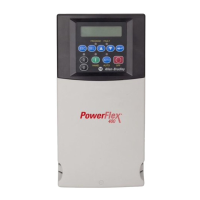
